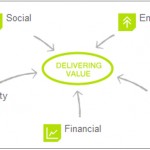Techniques for Effective Environmental Health and Safety Management

Environmental Health and Safety (EHS) is a crucial discipline for organizations of all sizes. It protects your employees, helps you meet your regulatory goals, and reduces the impact on your business activities.
If you want to get the most out of your EHS system and processes, it’s useful to look at the techniques and tools you can use to follow best practices and optimize health and safety.
Here are some of the methods you can use to ensure robust EHS throughout your organization.
Ensure Proper Accountability and RACI for EHS throughout the organization
Everyone has accountability for their own personal health and safety, but when it comes to other aspects of EHS, the lines can be more blurry. Make sure you have proper RACI (Responsible, Accountable, Consulted, Informed) roles and responsibilities at every level of your organization, and regularly check everyone is carrying out their roles and activities correctly.
Audit your Environmental Health and Safety Processes and Practices
You need to make sure that your health and safety policies and processes are fit for your purpose. The most effective way to do that is through comprehensive auditing and rigorously tracking corrective actions & measurements.
Use an independent auditor to identify potential issues with EHS, and create actions on stakeholders and teams to resolve gaps. Track actions through to completion and ensure proper accountability and traceability throughout.
Meet All of Your Occupational Health and Safety and Other Compliance Requirements
Organizations have stringent compliance requirements they must meet to ensure employees and others are properly protected. Regularly review OSHA and other regulations to understand how they impact your business. Immediately take corrective actions to address potential issues and risks.
Track these tasks through to completion so you can meet your compliance needs and avoid punitive action.

Ensure Any Incidents are Investigated for Root Cause and Addressed
Every near miss, accident, or injury has a root cause. It’s vital that your organization investigates any incident to understand contributing factors and context. You should then establish the root cause of the incident and take proper steps to prevent it from recurring.
Align Risk Management with Environmental Health and Safety
EHS does not exist in isolation, it touches on the people, policies, and processes across your business. It’s vital that you align EHS with your overall risk management.
That way, you can tie your EHS practices to operational risks, and vice versa. This can prevent duplication, ensure proper accountability, and reduce the risk of incidents before they occur.
Embrace Proactive, Continual Improvement for Environmental Health and Safety
Don’t wait for an incident to happen before you choose to act. Look at all of your operational policies and processes to understand the impact they will have on health and safety. If a process does not put employee health front and center, redesign or refine the process to reduce the risk of injury, accident, or environmental damage.
Share the philosophy and practice of continual improvement throughout your organization, and empower employees to make changes that protect the safety of them and their colleagues.
Choose the Right Environmental Health and Safety Software
Your EHS processes can be significantly enhanced by the right software or damaged by poorly-conceived technology. You need your EHS software solution to follow best practices, provide the functionality that all relevant operational areas and compliance areas need, be easy to use, and offer a comprehensive range of tools.
Use these tools and techniques, and you can significantly improve environmental health and safety throughout your organization. That’s good for you, your employees, your organization, and your regulatory and compliance goals.
About the author: Tim Lozier, Director of Product Strategy
Tim Lozier is the Director of Product Strategy at EtQ. Tim has an extensive background in software technology and has been involved in the creation of leading-edge technologies in user interface design and development.
Tim is responsible for fostering the development of leading Quality Management Software solutions and has helped shape EtQ’s strategic vision through leadership.
Image source:

Tags: Health and Safety, KPI, Work Safety





